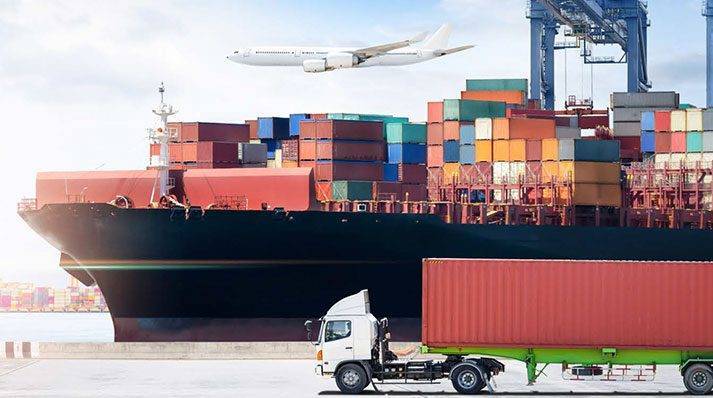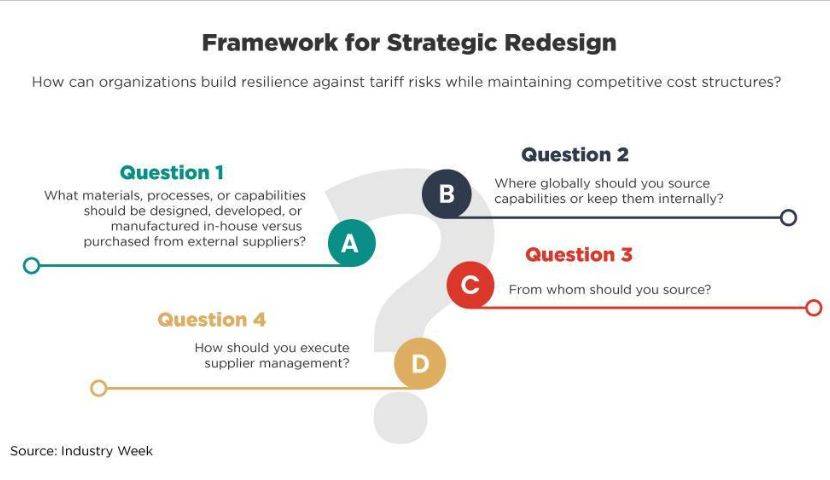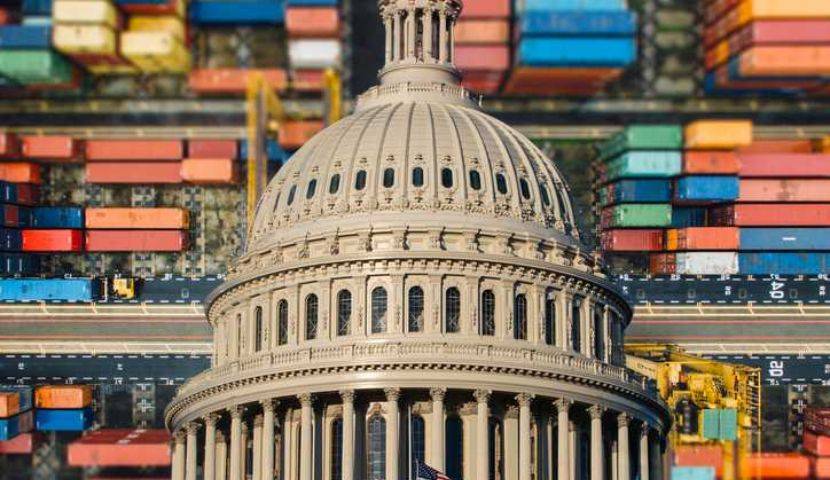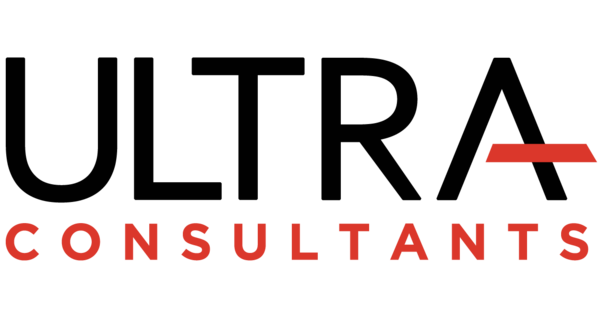The U.S. manufacturing sector is once again on edge, particularly due to the possible imposition of tariffs. While tariffs are often viewed as a tool to protect domestic industries and curb unfair trade practices, they can also lead to rising costs, disruptions in the supply chain, and higher prices for consumers.
But there are strategies businesses can employ to mitigate the negative impact of tariffs, specifically through strategic business process improvements and by leveraging the latest technologies. In this blog post, we’ll explore tariff mitigation strategies and how manufacturers can adapt to these new challenges by enhancing their operations and leveraging technology to remain competitive in a tariff-impacted environment.

How to Protect Your Supply Chain and Mitigate Disruptions
Download the eBook to discover how to protect your supply chain during times of change.
Understanding the Tariff Landscape
During President Donald Trump’s first administration (2017-2021), most significant tariffs were imposed on Chinese goods, aiming to reduce the U.S. trade deficit and encourage re-shoring of manufacturing. Starting in 2018, the U.S. imposed tariffs on Chinese imports including electronics, steel, aluminum, and machinery. China enacted retaliatory tariffs on U.S. products. These tariffs increased costs for manufacturers which relied on imported goods and materials, leading to disruptions in supply chains.
When President Joe Biden assumed office in 2021, he maintained many of Trump’s tariffs on Chinese goods. However, the Biden administration also occasionally granted tariff exclusions for certain products, aiming to balance support for domestic industries while avoiding economic harm.
Looking at 2025, the Trump administration has proposed new tariffs targeting additional sectors, including semiconductors, as well as steel and aluminum imports. If enacted, these could elevate manufacturing costs, disrupt supply chains, and push companies to find alternative sourcing or invest in automation to maintain profitability. Manufacturers may face more challenges in adapting to these changes to trade policies.
"A 25% tariff on Canada and Mexico threatens to upend the very supply chains that have made U.S. manufacturing more competitive globally. The ripple effects will be severe, particularly for small and medium-sized manufacturers that lack the flexibility and capital to rapidly find alternative suppliers or absorb skyrocketing energy costs. These businesses—employing millions of American workers—will face significant disruptions."
Jay Timmons, President and CEO | National Association of Manufacturers
Using Business Process Improvements to Overcome Tariff Challenges
A recent survey conducted by EBI found that almost half of respondents have created plans for addressing the impact of tariffs, while 1 in four have yet to set plans in place. “71% said their most likely reaction to higher prices from tariffs will be to pass along increases to customers. On the flip side, 19% said they are most likely to absorb the new costs.”1
While raising prices is one option, strategic business process improvements can help companies mitigate the negative impact on their operations, reduce costs and improve overall efficiency.
1. Streamlining Operations and Enhancing Lean Manufacturing
Lean manufacturing principles—aimed at maximizing value, reducing waste and improving efficiency—can be a powerful tool in mitigating the effects of higher material costs due to tariffs. By identifying and eliminating inefficiencies in the production process, manufacturers can reduce costs and improve profitability even as tariffs increase prices.
Improving processes can help reduce cost and improve efficiency. For instance, eliminating paper-based tracking and leveraging technology to automate cost tracking and production scheduling can add visibility to operations and eliminate waste.
2. Re-evaluating Supplier Relationships and Diversifying Sourcing
One of the most effective ways to counter the effects of tariffs is by optimizing the supply chain. Manufacturers can diversify their suppliers to cut down on their exposure to tariff-induced price increases. By diversifying supply chains and establishing secondary sourcing relationships with suppliers in countries not affected by proposed tariffs, manufacturing companies can maintain a more cost-effective supply chain. In addition, “near-shoring” or re-shoring some operations to bring production closer to home could reduce reliance on suppliers who are subject to tariffs as well as lowering transportation costs.

3. Improving Inventory Management
In addition to effective supply chain strategies, it’s essential for companies to efficiently manage their inventory. While importing safety stock ahead of proposed tariffs may be an effective buffer against price hikes, it may not be the best long-term solution.2
Modern inventory management systems can help facilitate having the right amount of stock at the right time through added visibility and even AI-assisted demand forecasting. This enables companies to avoid shortages and overstock situations that can worsen the impact of tariffs.
4. Optimizing Production Scheduling
As tariffs can create fluctuations in procurement timelines, establishing flexible production schedules is key to adapting to these unexpected shifts. Using advanced scheduling tools, companies can dynamically adjust production based on demand and availability of supplies.
For example, predictive analytics can help forecast supply chain disruptions. This enables manufacturers to plan their production cycles accordingly. Optimizing schedules and setting production to align with the availability of materials can help avoid costly delays and downtime.

Leveraging Technology for Maximum Gain
In addition to carefully re-evaluating business and production processes, companies should also embrace leveraging technology to reduce the impact of tariffs. Integrating new technology—or maximizing the capabilities of existing software—can help companies drive efficiencies, improve quality and maintain competitiveness despite higher costs.
1. Automation and Robotics
By incorporating automation technology, including robotics, into production lines, companies can reduce labor costs and minimize human error while increasing overall productivity. This is especially important in verticals where higher input costs (due to tariffs) are impacting profit margins.
For example, robotic process automation (RPA) in assembly lines, and smart manufacturing technology like machine monitoring and predictive maintenance can contribute to reducing production costs while increasing output. Plus, automation can help improve quality, leading to fewer defects, rework and waste—which all help offset the impact of rising material prices.
2. Digital Supply Chain Management
Cloud-based software systems like ERP and SCM enable manufacturers to gain real-time visibility into their shipments and supplier performance. These systems can automatically alert managers to potential delivery delays or shortages, allowing companies to proactively adjust schedules or shift to alternate suppliers.
In addition, using predictive analytics allows manufacturers to plan procurement strategy to minimize costs. Predictive analytics uses historical data and advanced algorithms to anticipate demand and optimize inventory levels. This data-driven approach helps manufacturing companies make informed decisions and be better able to address changing market demands.
3. Advanced Analytics for Cost Optimization
Implementing advanced analytics technology can enable better budgeting and cost forecasting by helping to predict fluctuations in material costs. By analyzing historical data, these systems allow manufacturers to identify trends and patterns related to tariffs and adjust their buying strategies accordingly. AI-enabled systems can also help pinpoint inefficiencies in the production process, further reducing costs and boosting profitability.
Adapting to Tariffs Through Innovation and Efficiency
While tariffs may undeniably posed challenges to U.S. manufacturers, the right strategies and technologies can help mitigate these impacts and even turn them into opportunities. Business process improvements such as lean manufacturing, supply chain optimization, and improved inventory management can reduce the negative effects of tariffs. Plus, leveraging technologies like modern ERP, WMS, and SCM systems, automation, and advanced analytics allows manufacturers to streamline operations, reduce costs, and maintain a competitive edge.
For industries like manufacturing, tariff risks are—rightly—a cause for concern. But committing to continuous improvement, process optimization and digital transformation is key to successfully navigating this new trade environment. Manufacturing companies that can adapt to the changes, embrace more efficient business practices, and leverage technology will have an advantage to weather the storm.
Reach out to the Ultra team for more information on optimizing your business processes and making the most of your technology to minimize impact of tariffs on manufacturing. Schedule a free 20-minute discovery call today.
Table of Contents
More ERP material...
Assessing Your AI Maturity
This article breaks down how businesses can measure their AI maturity to…
Why You Should Hire a Business Process Improvement Expert to Kick Off Your AI Business Transformation
AI won’t fix broken processes; it’ll just make the chaos run faster.…
How Food Manufacturers Can Use Existing ERP to Optimize Supply Chains
Food manufacturers often underuse their ERP systems, missing opportunities to strengthen supply…



